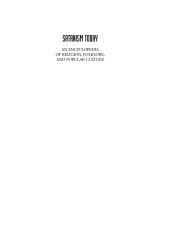I. VAMA MARGA Foundations Of The Left-Hand Path - staticfly.net
I. VAMA MARGA Foundations Of The Left-Hand Path - staticfly.net
I. VAMA MARGA Foundations Of The Left-Hand Path - staticfly.net
You also want an ePaper? Increase the reach of your titles
YUMPU automatically turns print PDFs into web optimized ePapers that Google loves.
omnipresent Ether, which is symbolized in the sexual act. Thus, the forces<br />
94<br />
that compose the universe are taken into the celebrant's bodies, a practice<br />
Western magicians will see as comparable to the summoning of the four<br />
elements traditional to Hermetic ceremonies. Tantricists of various sects have<br />
accorded other esoteric symbology to the five elements, above and beyond<br />
95<br />
their literal meaning and obvious taboo status. <strong>The</strong> eating of matsya, or fish,<br />
prohibited to vegetarian Hindus, has been thought to represent the feminine<br />
principle essential to the left-hand path. Alternately, the "fish" might be<br />
interpreted as the transformative currents that "swim" through the left ida and<br />
right pingala channels of the subtle body, and the element of prana, or air,<br />
that also swims through the ether and the physical body.<br />
<strong>The</strong> ritual ingestion of Mamsha, or strongly spiced meat, not only<br />
breaks the Hindu taboo against flesh-eating. It also symbolizes the initiate's<br />
recognition that left-hand path initiation occurs during his/her lifetime within<br />
the flesh, rather than in a life-after-death state. <strong>The</strong> word for meat, mamsha,<br />
is also decoded according to twilight language as meaning ma (tongue) and<br />
amsha (speech), representing the proper pronunciation of mantra so<br />
important to left-handed rites.<br />
Mudra (parched grain, or dried beans) has been interpreted as a<br />
coded reference to the withholding of bodily energy and essence manifested<br />
in some male Tantrika's retention, or reimbibation, of semen for metaphysical<br />
purposes. As a symbol of vegetable life, mudra can be thought of as the<br />
element earth. <strong>The</strong> female partner in left-hand sexual rites is often known as<br />
the mudra, a designation connected to the yogic ritual hand gestures also<br />
known as mudra, or "that which gives delight".<br />
Madya is more than wine; it is the liquid symbol of altered<br />
consciousness and the spiritual intoxication of the visionary, a divine<br />
drunkenness. As an elemental symbol, wine is related to fire. <strong>The</strong> drinking of<br />
wine in the Panchamakara ritual celebrates the application of joy to initiatory<br />
ends, breaking with the sober-minded orthodoxy of the established priestly<br />
class of Brahmins. John Woodroffe, the pioneering Western scholar of<br />
Tantra, mentions in his Shakti and Shakta that the Tantric texts state that the<br />
difference separating the left-hand and the right-hand paths can best be<br />
compared to the contrast between wine and milk. Significantly, wine and<br />
intoxication are considered to be of a feminine shakti nature in Hindu lore,<br />
and many Hindu goddesses are understood to be incarnated in the material<br />
world as the elemental spirits of intoxicating, maya substances.<br />
Drunkenness, universally prohibited by ascetic, pleasure-denying<br />
creeds around the world, can be found as a symbol for many other divine<br />
beings representative of the left-hand path values of disorder, creative chaos,<br />
and Eros. For instance, in the relatively puritanical ancient Egyptian society,<br />
the sexually insurgent storm and war god Set and his Priesthood were<br />
strongly associated with drunkenness; an especially powerful desert wine was<br />
known as the Gift of Set. Set's striking similarity with Shiva in his fearsome,<br />
atavistic guise as the previously described Rudra the Howler is not without<br />
relevance. In the later Middle East, Sufi heretics within Islam of a left-hand<br />
path bent continued this tradition, composing poetry comparing their visions<br />
to the tempestuous intoxication stirred by wine and beautiful women or boys.<br />
96<br />
However, it must be remembered that this ritual drunkenness – like<br />
all of the sensory pleasures of the left-hand path – is entered into only when<br />
the adept has already trained his or her mind to transcend normal waking<br />
consciousness. In the milder left-hand path sects, only a token amount of<br />
alcohol is consumed during the rite, merely enough to break the taboo and<br />
symbolize the esoteric principle inherent in the wine. In others, especially the<br />
extreme Aghori school, copious quantities are quaffed from skull cups to
















